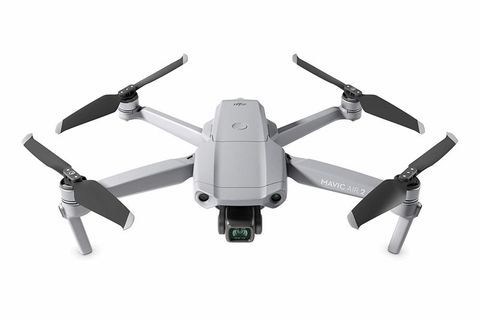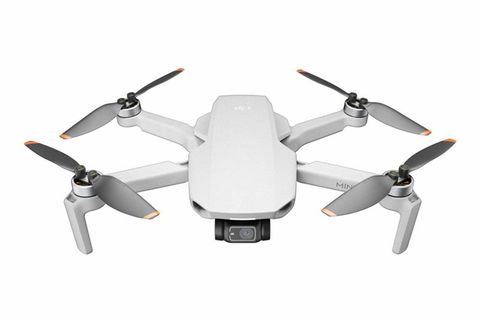How We Selected
To
pick the best drones, we relied on our own previous knowledge and
coverage. I got my first drone shortly after DJI released the Phantom 2,
in 2014. Since then I’ve flown many models from a lot of brands that no
longer exist, or that exist in other guises, such as 3-D Robotics. My
first interest—and still my primary one—was in aerial photography. As an
avid shooter who sometimes supports his freelance journalism with still
and video, having a different view changed how I capture the world for
professional work.
We also recruited a few pros to help with the
selection process, since they spend thousands of hours a year flying and
testing every drone they can get their hands on. “Knowing what’s coming
next is really part of my job,” says Matt Sloane, CEO of Skyfire
Consulting in Atlanta. Sloane began his company seven years ago to help
firefighters and emergency ops use drones as tools to get more “eyes on
the situation.” Sloane says most SWAT teams, for instance, would happily
(and wisely) risk a drone rather than an officer, and Sloane himself
not only has commercial drone licensing, he also has his commercial
license to fly manned aircraft. We also tapped Billy Kyle’s knowledge.
Kyle is founder of Atmos Aerial services outside Philadelphia, a
professional surveying company that he says mostly entails flying
delicately around construction sites, conducting aerial mapping for
farmers, as well as for real estate firms. Kyle also reviews drones and
offers quick guidance through instructional videos, and has about 100,000 followers on Youtube.
Best All Around
DJI Mavic Air 2
Camera: 4K at 60 fps, 48 MP + 12 MP | Flight time: 34 minutes
Top speed: 42.3 mph | Range: 6.2 miles
Kyle thinks the Mavic Air 2 is the perfect “tweener drone,” because
it gives you some of the higher level camera capabilities of the most
expensive Autel and Mavic 2 Pro drones, as well as more advanced sensing
technology, without an eye-watering price tag. Among the key camera
features are the ability to shoot 240 fps slow motion video and 8K hyper
lapse—the latter is time-lapse video, but do note that’s a
battery-intensive mode that mostly you’re going to launch, fly, record,
and then immediately land. Likewise, 48 MP image capture is essentially a
digital trick that takes multiple images at once. It doesn’t replicate
the crystal-clear photography you get from the larger sensor on DJI’s
Mavic 2 Pro. Still, the feature set of the Air 2 is excellent. For
instance, modes like Point of Interest 3.0 allows creation of an
automated flight path around an object (think: 360 degrees around a boat
in the water); Spotlight 2.0 lets you tap an object, like a person, in
the viewfinder and the camera stays fixed on that subject, so you can
focus on flying while the subject moves. Advanced Pilot Assistance
System (APAS) 3.0. also lets you focus on capturing video, and if you’re
flying toward an obstacle, the drone will re-route automatically to
prevent a collision. Speaking of which, Mavic Air 2 also has forward,
backward, and downward sensing, distinguishing it from almost no sensing
on the Mavic Mini 2.
Best Learner Drone
DJI Mavic Mini 2
Camera: 4K at 30 fps, 12 MP | Flight time: 31 minutes
Top speed: 35 mph | Range: 6 miles
Sloane recommends the Mavic Mini 2 to anyone who thinks they want to
get into drones but isn’t dead certain. He says it’s easy to fly and has
multiple modes, such as a very slow “cinematic” setting designed to
capture smooth video, that guardrail novice flyers. One key feature for
learners, too, is built-in GPS. “Beginners lose sight of a drone above a
tree line,” Sloane notes “and that’s that. It’s gone forever.” GPS,
however, enables you to tap “return to home” on the app, and that tells
the Mini 2 to fly itself back to the launch point. The drone is quite
stable, too, able to fly in wind speeds up to 24 mph. And yet, at only
249 grams, it falls just below the weight bar that would require FAA
registration. Video and stills resolution is on par with those of a good
iPhone, and even though the digital zoom of 2x and 4x doesn’t produce
astonishing video, it’s a handy tool for figuring out the drone’s
proximity to nearby objects. Why not just get the Mini 2 versus, say,
DJI’s more expensive drones or the Skydio 2 or Autel below? Simple: The
smaller camera sensor can’t suck in as much light, so shooting at
sunrise or sunset won’t be as sharp, and it’s missing some more advanced
video options, too. Further, it doesn’t have the follow capability of
the Skydio, nor higher-tech sensing for trickier flying scenarios. All
that said, the Mini 2 can still take beautiful stills and video, and
because it’s so stable and beginner-friendly, there’s no better model to
learn on. Sloane says it’s the drone he takes, more often than not,
when "I just want to fly for fun.”


